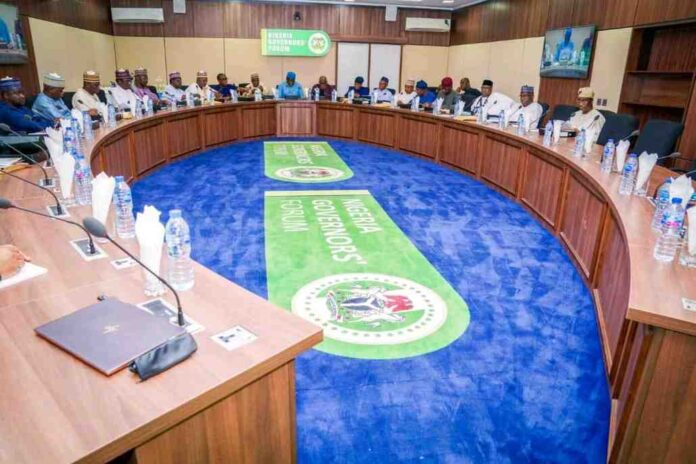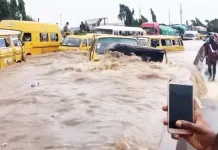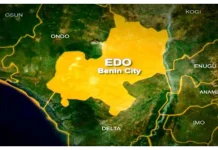On the heels of the deadly floods that hit Maiduguri, Borno State capital, last week, the Nigeria Hydrological Services Agency, NIHSA, has issued an alert to state governors, especially those around River Niger, of the possibility of floods in the coming weeks following what the agency described as the river’s rising water level.
Quoting a report from the Niger Basin Authority (NBA), Niamey, Niger Republic, the Director General, DG, NIHSA, Umar Ibrahim Mohammed, said the rising water level of the River Niger system was noticed around August 23, 2024, stressing that all the states and communities along the River Niger system should be on alert.
States immediately at risk, according to the agency, include Kebbi, Sokoto, Zamfara, Niger and Kogi.
Mohammed, however, added: “We hope by the time it (water) gets to Kogi, because of the lock-up dams we have along to reduce the speed, the level and the impact (will go down).
The DG also said NIHSA was informing governors about the potential floods that could result from the release of water from the Lagdo Dam in Cameroun.
Besides the Maiduguri disaster, floods occasioned by downpour have recently wreaked havoc in Jigawa, Bauchi and Adamawa states, among others, taking lives and causing significant damage to properties as lands were washed away.
Mohammed, in an interview with Sunday Vanguard, said: “It is glaringly clear that we have been seeing how floods have been ravaging communities, and that is due to the fact that there has been an excessive rainfall.
“You can’t really determine the level because climate change has been so unpredictable. The water level has been rising up based on climate change. So that is basically what has been happening.
“It is mostly based on the excessive rainfall that has been taking place in some areas in some states.
“For instance, Jigawa State, around the Borno and Yobe axis, for the past one week, there has been continuous rainfall, and that has been the reason why we saw water rising and taking over communities.
“But it is expected that the water should flow through Yobe, through River Damaturu because of the afforestation project that took place; I think, in the early 60s, 70s, there was a lot of sand banking to control erosion.
“So those are the milestones that have been stopping the continuous flow of this rainfall down to those rivers, tributaries that channel the water to Lake Chad.
“So those are some of the reasons that we have been seeing a different trend now taking over the roads and also the communities around Bauchi, Jigawa, and Yobe states.”
Jigawa, Bauchi scenarios
On the disastrous floods in Jigawa and Bauchi states, among others, the DG said: “What the Nigeria Hydrological Services Agency does is we analyze the behaviour of water, then we put up a forecast as to the expected behaviour of the water is, that is all.
“Most of this preparedness takes place at the Nigerian Emergency Management Agency, NEMA; they are the ones that prepare for any emergency happening.
“But here at NIHSA, we analyze the data and share with them for them to know the quantum of effect that may likely take place in terms of this disaster, and they are to put up the disaster management activities at the national level, but they collaborate with states.
“The floods didn’t hit Jigawa State alone, but Bauchi State as well and lots of communities were affected.
“In fact, in Bauchi State, we have lost about three or four major roads to this floods, cutting off entire roads, highways that connect Kano to Maiduguri, they are totally cut off.
“Some parts of Jigawa around Hadejia axis and Zaki in Bauchi are waterlogged area and the Hadejia-Jama’are River Basin Development Authority is, and it is mostly a flat land, and as it is, it can only take certain amount of water; the ground if it cannot take anymore, that is why it keeps on ravaging communities because the ground cannot take more water than it has already taken.
“So that is basically why that Jigawa axis is having too much flooding unlike some of the states like Bauchi which has mountain areas, a lot of rivers.
“When there is consecutive rainfall going on for like three, four days, surely the ground cannot take that excessive water, it can only take a certain amount of water, and then the remaining just be spilling.
“My major concern is to reduce destruction of properties, destruction of lives.
“In my community in Bauchi, we have lost about over 10 communities to flooding, and it is in just one local government area called Gamawa.
“The victims are taking refuge in primary schools, hospitals.
“They have lost their homes, and a particular community is 90 per cent ravaged by floods, and more floods are expected.
“The larger effect is that there’s an economic impact, not to talk about the health issues from water borne diseases. So, it is devastating, and those are the things that we really want to arrest before they even happen. This is the new direction that the agency wants to take now”.
Coming weeks
Speaking on what the agency expects to happen in coming weeks, Mohammed said: “We are expecting the usual. When there are excess water activities around Mali and Niger Republic because we communicate with them, we have this inter-boundary communication linkages and synergy, so we communicate with them, just as we communicate with official Lagdo in Cameroon as well. So we communicate with the Niger Basin too.
“They usually give us an early warning if they notice the water level there is going high.
“Now it gets to a threshold where it becomes worrisome, so they quickly alert us about the water level.
“In such a case when we get this warning, we usually inform the Shiroro and Kanji Dams to spill their water so as to contain what is coming, so that they will reduce the impact of the water flowing into the country through the Niger Basin.
“These dams will secure some of the water, then the rest will continue to flow, by effect reducing the force or quantum of water coming in as floods. So that is the kind of relationship we have and those are the things that we try to manage, to reduce the impact of flooding in the country”.
Lagdo Dam alert
He explained that state governors were already being alerted ahead of water release from Lagdo Dam
“They (Lagdo Dam) will surely inform us when it reaches that level.
“Like I told you, we have about three layers, so it has not gotten to that level yet, but as soon as it gets there, they will surely let us know, then we will put up the necessary warning and inform the immediate stakeholders.
“Just like this one, we are already informing the state governors that are the immediate stakeholders (of River Niger), and they are the governors of Kebbi, Sokoto, Zamfara, Niger and Kogi states.
“We hope by the time it (water) gets to Kogi, because of the lock-up dams we have along to reduce the speed, the level and the impact (go down)”.
-Advertisement-
Grab our latest Magazine, "Chief Wole Olanipekun, CFR, SAN, A man of wide horizons and deep intentions". Get your order fast and stress free.
For more details about Newswire Law&Events Magazine, kindly reach out to us on 08039218044, 09070309355. Email: newswiremagazine@yahoo.co.uk. You will be glad you did







